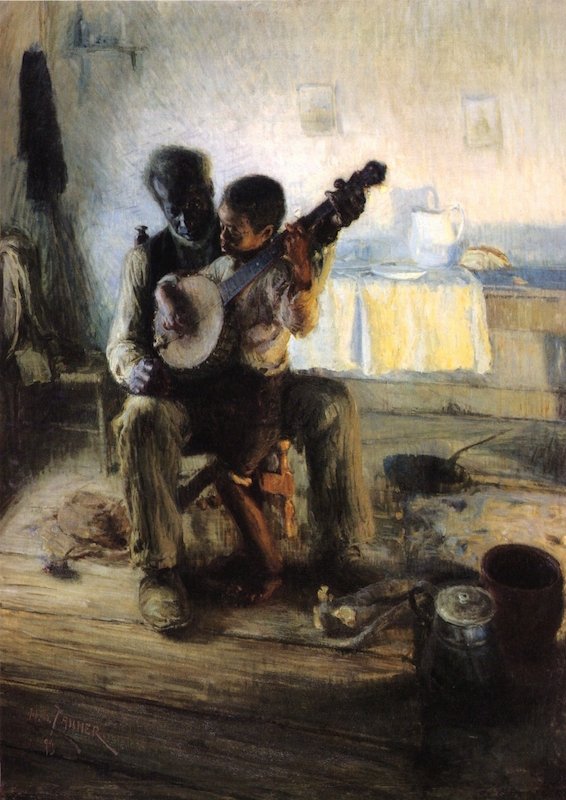Henry Ossawa Tanner: Pioneering Artist, Advocate, and Trailblazer
Henry Ossawa Tanner (1859–1937) stands as a towering figure in American art history, celebrated for his groundbreaking contributions and unwavering perseverance in the face of adversity. Born in Pittsburgh, Pennsylvania, Tanner navigated the challenges of racial discrimination to become the first African American painter to gain international acclaim. His journey from humble beginnings to global recognition is a testament to his remarkable talent and indomitable spirit.
Early Life and Education:
Tanner’s artistic journey began in the vibrant city of Pittsburgh, where he discovered his passion for painting at a young age. Despite facing racial prejudice, he pursued his artistic aspirations with determination. Tanner’s talent caught the attention of local mentors, who recognized his potential and encouraged him to pursue formal training.
At the Pennsylvania Academy of the Fine Arts, Tanner encountered the harsh realities of racism within the art world. Despite these challenges, he honed his skills and developed a unique artistic voice. Undeterred by the limitations imposed by his environment, Tanner sought opportunities abroad to further his artistic development.
Breakthrough in Paris:
In 1889, Tanner made the pivotal decision to move to Paris, a city renowned for its artistic vibrancy and cultural diversity. In the welcoming atmosphere of the French capital, Tanner found the freedom to explore his artistic vision without the constraints of racial prejudice. Immersed in the rich cultural milieu of Paris, he embraced new techniques and styles, blending academic traditions with the luminous palette of Impressionism.
Tanner’s breakthrough came with his painting “The Banjo Lesson” in 1893, a poignant portrayal of African American life that captured the hearts of viewers worldwide. This masterpiece catapulted Tanner to international acclaim, establishing him as a pioneering African American artist on the global stage.
Henry Ossawa Tanner
The Banjo Lesson, Oil on canvas, 35.5 x 49in (124.5 × 90.2 cm), 1893
Throughout his career, Tanner’s religious faith deeply influenced his artwork. He often depicted biblical themes in his paintings, infusing them with spiritual symbolism and emotional resonance. Despite his success in secular art circles, Tanner remained devout throughout his life, viewing his artistic talent as a divine gift.
In addition to his artistic pursuits, Tanner was a passionate advocate for social justice. He used his influence to support causes related to civil rights and racial equality, leveraging his platform to amplify marginalized voices within the art world and beyond.
Despite his international fame, Tanner remained humble and dedicated to his craft. He eschewed the trappings of celebrity, choosing instead to lead a quiet life focused on his art and his family. His dedication to his principles and his commitment to authenticity endeared him to admirers and fellow artists alike.
Legacy and Impact:
Henry Ossawa Tanner’s legacy transcends the confines of his era, inspiring generations of artists and activists to pursue their dreams fearlessly. His pioneering spirit and unwavering determination serve as a beacon of hope for those who dare to challenge the status quo and defy expectations. Through his timeless art and his enduring legacy, Tanner continues to enrich and enlighten the world, reminding us of the transformative power of creativity and perseverance.
Below are some other key artworks that played a pivotal role in Tanner’s artistic career.
"Daniel in the Lions' Den" (c. 1907): Another iconic work by Tanner, this painting portrays the biblical story of Daniel miraculously surviving the den of lions. The piece showcases Tanner's mastery of light and shadow, as well as his ability to infuse religious subject matter with dramatic intensity.
"The Resurrection of Lazarus" (c. 1896): In this painting, Tanner depicts the biblical scene of Jesus raising Lazarus from the dead. The composition exudes a sense of awe and wonder, with vibrant colors and dynamic brushwork bringing the miraculous event to life.
"The Thankful Poor" (1894): This painting portrays two impoverished individuals praying, giving thanks over a humble meal. Tanner's compassionate portrayal of the subjects and his skillful rendering of light and shadow highlight his ability to capture the dignity and humanity of his subjects, regardless of their social status.
"Nicodemus Visiting Jesus" (1899): In this painting, Tanner depicts the nighttime encounter between Jesus and Nicodemus, a Pharisee seeking spiritual guidance. The piece exemplifies Tanner's ability to infuse biblical narratives with emotional depth and spiritual resonance.






